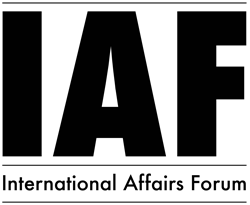| Mon. June 16, 2025 |
 |
|
||
|
||||
| ||||
In June 2015, the Office of the United Nations High Commissioner for Refugees’ (UNHCR) annual report, Global Trends Report, announced that world displacement has reached an all-time high, surpassing previous highest records experienced during World War II. The most common culprits of such displacement are increased instances of armed conflict and persecution.
A small country located in the Horn of Africa, Eritrea assumes a central place in contemporary discourses on global migration: it is among the top refugee producing countries in the world. Europe is a major destination for newly arriving Eritrean refugees. Thus, as far as migration is concerned, Eritrea cannot be discussed without a mention of Europe. By focusing on this interconnectedness, this contribution critiques some erroneous policies of the European Union (EU) related to the Eritrean refugee crisis in particular and the entire political crisis of the country in general.
Tsanta in the making
Eritreans frequently rank among the top two or three groups of newly arriving refugees in Europe. In fact, in some specific instances, the number of incoming Eritreans was by far greater than any other nationality. For example, in the period between January 2014 and August 2014, the number of Eritreans who arrived in Italy (via the southern maritime borders of Europe) was 28,557, compared to the corresponding second highest figure of 23,945 Syrians – a difference of 4,611.
Syria is experiencing the most violent contemporary armed conflict in the world. In contrast, Eritrea (at least on the surface) does not seem to be experiencing any problems related to armed conflict. Nonetheless, Eritrea is stifled by one of the worst on-going cases of political repression, resulting in gross human rights violations comparable with only a few instances at the global level. The fact that Eritrea continues to produce a comparable number of refugees with war-torn countries such as Syria means that its political repression is deeply entrenched, so much so that Eritrean citizens are fleeing the country in startlingly high numbers.
Reflecting on the frightening level of the mass exodus of the Eritrean population, four Eritrean Catholic Bishops wrote: “It is not just the continuous outflow, and hence the depletion, of the people on its own that is worrying us, but the fact that we are heading towards extinction [tsanta] as a result …” Thus, it is not surprising that the Wall Street Journal describes Eritrea as “one of the world’s fastest-emptying nations.”
Eritreans now comprise the majority of victims of the well-documented tragedy of human trafficking in the Sinai Desert over the last five or more years. Eritreans are also at the heart of numerous tragic sea accidents that have taken place recently along the southern tip of Europe and across the coast of the Mediterranean Sea, a place that has earned the designation as one of the most dangerous maritime routes in the world. In the Lampedusa Tragedy of 3 October 2013 – involving the capsizing of an overcrowded migrant boat off the coast of Lampedusa, the largest island of the Italian Pelagie Islands in the Mediterranean Sea – more than 360 people perished. From a list of 155 survivors, there was only one non-Eritrean. A particularly odious aspect of the Lampedusa Tragedy is the story of an Eritrean woman who gave birth while drowning in the sea. This was known after the corpse of the woman was found attached, by umbilical cord, to the corpse of a baby boy.
The push factors
The primary reason behind Eritrea’s mass exodus is the government’s policy of indefinite military conscription without formal pay or salary, which affects every able-bodied member of Eritrean society (men and women), sometimes affecting even senior citizens above the age of seventy. Coupled with this all-encompassing abusive practice is a widespread and systematic violation of human rights, including pervasive torture, detention without trial, extra-judicial executions and other abhorrent practices. There is overwhelming evidence of this, the most recent and perhaps also the most important of which is included in the report of the UN-mandated Commission of Inquiry on Human Rights in Eritrea (COIE), released on 8 June 2015. The report states in part: “It is not law that rules Eritreans, but fear.”[7]
The COIE report adds that some of the violations that are taking place in Eritrea may amount to crimes against humanity – one of the three major categories of international crimes that fall under the jurisdiction of the International Criminal Court (ICC). Unless this deep-seated political crisis is resolved, Eritrea will continue to be one of the major refugee producing countries in the world.
Read the rest and more in the latest issue of International Affairs Forum, focusing on migration and statelessness, by clicking HERE.
| Comments in Chronological order (0 total comments) | |
| Report Abuse |
| Contact Us | About Us | Donate | Terms & Conditions |
|
All Rights Reserved. Copyright 2002 - 2025